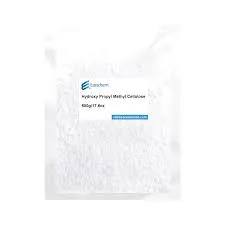
Dhj . 01, 2024 15:51 Back to list
Understanding the Applications and Benefits of Redispersible Polymer Powder in Construction
The Importance of Redispersible Powder in Modern Adhesives and Coatings
In the realm of construction, adhesives, and coatings, the significance of redispersible powder cannot be overstated. These innovative materials have revolutionized the way we think about formulations and applications in various industries, including construction, paints, and various industrial processes.
Redispersible powders are typically made from polymers that, when dry, can easily be re-dispersed in water. They are commonly derived from emulsions such as vinyl acetate-ethylene copolymers, styrene-acrylate copolymers, and others. When added to cement-based or gypsum-based formulations, they provide unique properties that enhance the performance of the end product.
One of the primary benefits of redispersible powders is their ability to improve adhesion. In construction, strong adhesion between different layers of materials—like tiles and cement—is crucial. Redispersible powders enhance the adhesion properties of tile adhesives, thereby ensuring that tiles remain securely in place over time. This not only results in higher quality finishes but also reduces the risk of costly repairs due to delamination or failure of the adhesive bond.
Another key advantage is the improved flexibility and workability they offer. Products enhanced with redispersible powders can be formulated to remain workable for a more extended period. This extended open time allows contractors to position materials better and make adjustments as needed during the application process, which is particularly valuable in large-scale projects. Additionally, the improved flexibility provided by these powders helps accommodate movement and changes in the substrate without cracking, leading to more durable installations.
redispersible powder

Water resistance is another area where redispersible powders shine. Many formulations with redispersible powders exhibit enhanced water repellency, making them suitable for use in moist environments. This characteristic is beneficial not only for outdoor applications, where exposure to rain and humidity is a factor, but also in damp indoor environments such as bathrooms and kitchens. Redispersible powders help protect against water damage, mold, and mildew, extending the lifespan of the materials.
Furthermore, redispersible powders enable better control over the rheology of the mixtures. The incorporation of these powders allows manufacturers to tailor the viscosity and flow properties of the formulations. This leads to improved ease of application, helping to ensure a uniform spread and reducing the likelihood of imperfections during the installation process.
Another important aspect of redispersible powders is their contribution to sustainability. By using formulations that include these powders, manufacturers can reduce the need for solvent-based components, thereby minimizing volatile organic compounds (VOCs) in their products. This not only aligns with environmentally friendly practices but also meets the increasing regulatory demands and consumer preferences for greener products.
Finally, the versatility of redispersible powders can be seen in their wide range of applications. Beyond adhesives and coatings for construction, they are used in various other industrial sectors, including flooring, sealants, and even some cosmetic products. Their adaptability to different formulations makes them a valuable addition to many product lines.
In conclusion, redispersible powders play a vital role in the performance and versatility of modern adhesives and coatings. By improving adhesion, flexibility, workability, water resistance, and sustainability, they help create durable, reliable products that meet the demands of various industries. As technology continues to advance, the importance of these powders will likely grow, paving the way for even more innovations in construction and manufacturing. Their impact is profound and will continue to shape the future of material formulations in various applications.
-
Unlocking the Benefits of HPMC Products: A Gateway to Versatile Applications
NewsAug.07,2025
-
Unleashing the Potential of HPMC Ashland: A Comprehensive Look
NewsAug.07,2025
-
Tile Bonding Cellulose: The Key to Superior Adhesion and Durability
NewsAug.07,2025
-
Hydroxypropyl Methylcellulose Powder: The Versatile Component in Modern Pharmaceuticals
NewsAug.07,2025
-
Hydroxyethyl Cellulose: The Versatile Solution for Various Industries
NewsAug.07,2025
-
Hydroxyethyl Cellulose (HEC): The Versatile Polymer for Various Applications
NewsAug.07,2025







